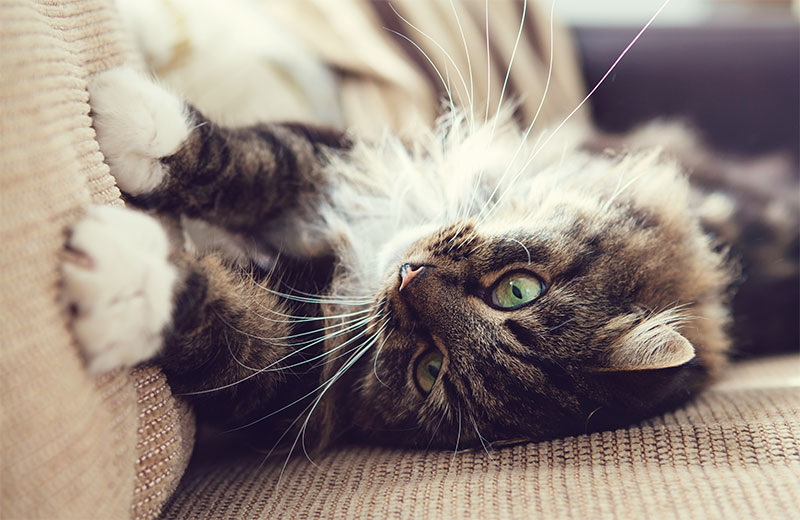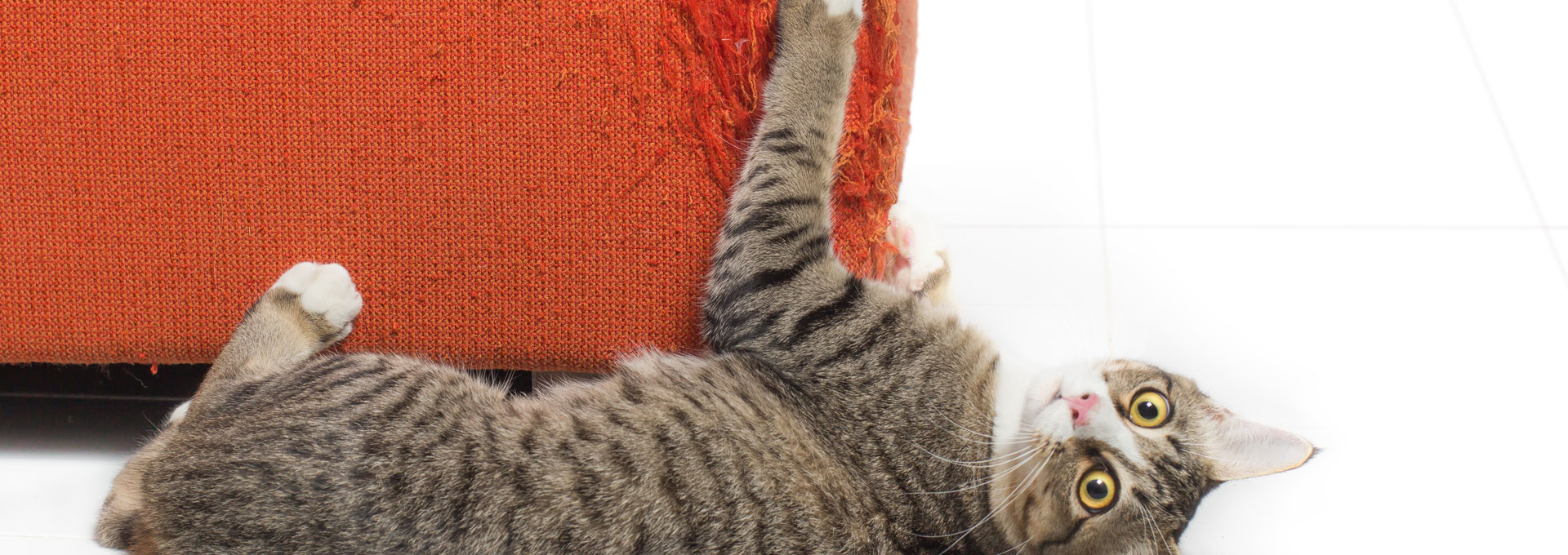
Kitty Has Claws! How to Protect Your Furniture From Your Cat
Cats love to scratch. Furniture, carpets, and pretty much anything they can get their claws into. They simply can’t help it because scratching is a desire that’s built into their instincts for marking territory. So, like burying waste, grooming, and pouncing, scratching is a difficult behavior to stop.
Although you probably can’t stop your cat’s scratching altogether, you can take some steps to make your cat’s scratching habit a little less destructive.
4 Tips to Protect Your Furniture From Your Cat's Scratching
1. Determine Your Cat's Favorite Targets
The first step in protecting your furniture from your cat’s claws is to identify your pet’s favorite targets. Does your cat tend to scratch wood, upholstered furniture, carpet, or drapes? What angle does your cat prefer to scratch at? Vertical or horizontal surfaces?
2. Provide Desirable Alternatives
Now that you know what types of scratching your cat prefers, you should look for a scratching alternative that will meet these needs. If your cat likes to scratch the carpet, provide a carpeted post. If your cat is more drawn to upholstery, they’ll probably enjoy scratching a post covered in sisal.
Scratching posts of all sizes, shapes, and materials are available at most pet supply stores, so you should be able to find one that meets your cat’s needs and is an even more attractive target than your furniture.
Scratching posts of all sizes, shapes, and materials are available at most pet supply stores, so you should be able to find one that meets your cat’s needs and is an even more attractive target than your furniture.
3. Discourage Them From Scratching the Furniture
You should also take measures to discourage your cat from scratching your furniture. However, do not do this by squirting your cat or using any other method that you must be present for. It’s important that your cat learns not to scratch whether you’re home or away.
Stack plastic cups in front of their usual scratching target, purchase a motion-activated noise machine, or a motion-activated cat deterrent that will spray a puff of air in their direction. These types of training tools are designed specifically for felines, and they won’t teach your cat to simply fear your presence like other methods could.
4. Keep Their Claws Trimmed
You can minimize the damage your cat is able to inflict on the upholstery by keeping its claws trimmed. To trim your cat’s claw, squeeze its toe to extend the nail. Then trim at an angle that will remove the hook-shaped portion at the end of the claw without cutting into the quick. If you knick the quick of your cat’s nail, you’ll hit nerve endings and blood vessels, causing pain and bleeding for your pet.
For more information about cat scratching, contact our veterinary clinic today!





